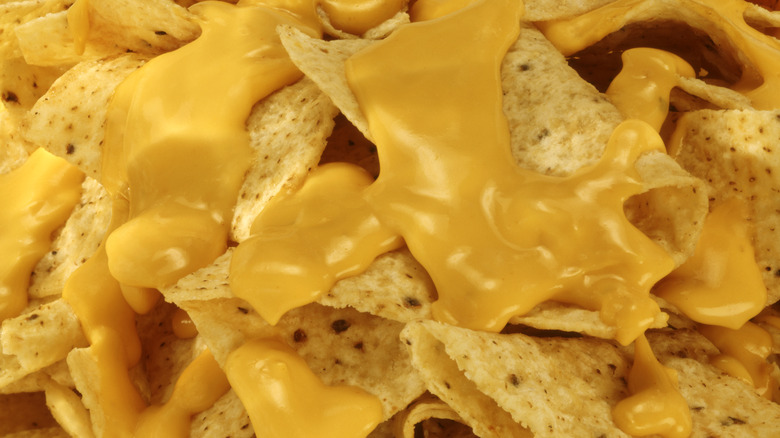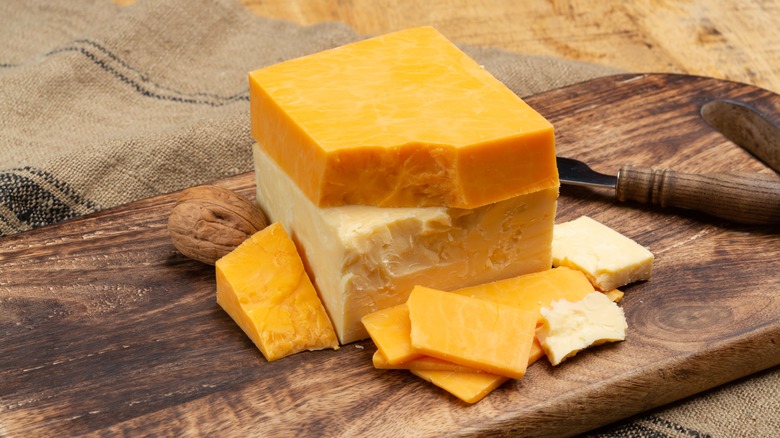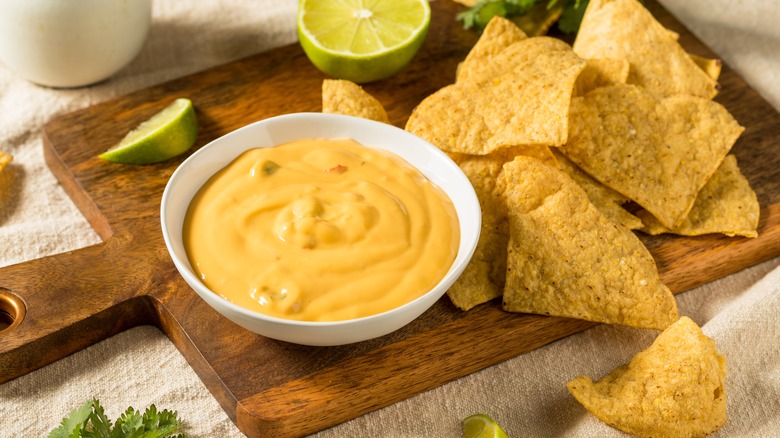How To Melt Cheese For Nachos Without Burning Them
No food might be as decadent as a basic bowl of nachos. At the core, the dish consists of just fried tortilla chips lathered in melted cheese for a masterful combination of salty and savory elements. The two-ingredient foundation seems hard to mess up, but it can be easy to accidentally burn the queso during the melting process. Thankfully, you can avoid this issue by adjusting the cooking technique to use low heat and stirring constantly.
Cheese is a delicate dairy ingredient. High heat can easily destroy the proteins within them and cause excess evaporation, leaving you with a charred, lumpy sauce that neither feels nor tastes good. While it might take you a little longer to make a nacho sauce using a low temperature, it will help you maintain the molecular structure of the queso as you melt it and give you the results you're looking for.
As you're heating up the cheddar over the stovetop, you'll also want to stir constantly until everything has incorporated into a consistent gooey sauce. The cheese at the bottom of the pan will inevitably be closer to the burners, and therefore has a much higher chance of getting torched unless it is frequently moved around.
Choose the right cheeses to melt for nachos
Not all cheeses are able to melt into a smooth, uniform sauce. Typically speaking, cheeses with higher fat and moisture content, such as brie and fontina, are able to liquify more easily under heat than lean, dry variants like Parmesan. In the context of nachos, young cheddar, American, and Monterey Jack remain the most commonly used cheeses that can be easily turned into a sauce, but you can use less conventional options such as gouda, too.
Mozzarella and provolone are the exception to the melting rule, as they are stretched cheeses that are specifically made to become stringy when warmed up. Acidity also plays a factor, as tangy feta, for example, will remain solid under heat. This makes it near impossible to turn that type into a nacho sauce, so you'll want to use it as a topping instead.
In addition to cheese, many like to adorn a plate of nachos with toppings such as guacamole, chorizo, and manchego, which are ingredients that complement the Tex-Mex origins of the popular dish. Some chefs take their ingenuity even further and start to add more unconventional ingredients, as seen with crab rangoon nachos.
For creamier results, combine melted cheese with a bechamel sauce
To get the gooey consistency that most store-bought or restaurant-made nacho cheese sauces have, you'll want to whip up a bit of bechamel sauce to mix in with the cheese. It's one of the most commonly used concoctions in traditional French cooking, though it works well here, too. Since the most basic bechamel recipe consists of milk, butter, and some flour, you'll essentially add more fat and moisture to the melted nacho cheese, and create an even smoother topping for the chips.
Start with making the bechamel sauce roux, heating it up slowly in a small pot on the stovetop before adding in the cheese. Nonstick cookware will be your friend, as bechamel becomes more viscous and prone to sticking once you start adding in the cheese. If you're rushing to get the sauce done on time, you can grate your cheese into shavings before throwing them into the pot. The shavings will melt much faster than huge hunks of cheese due to the smaller size, saving you precious minutes that would otherwise be spent stirring vigorously.



